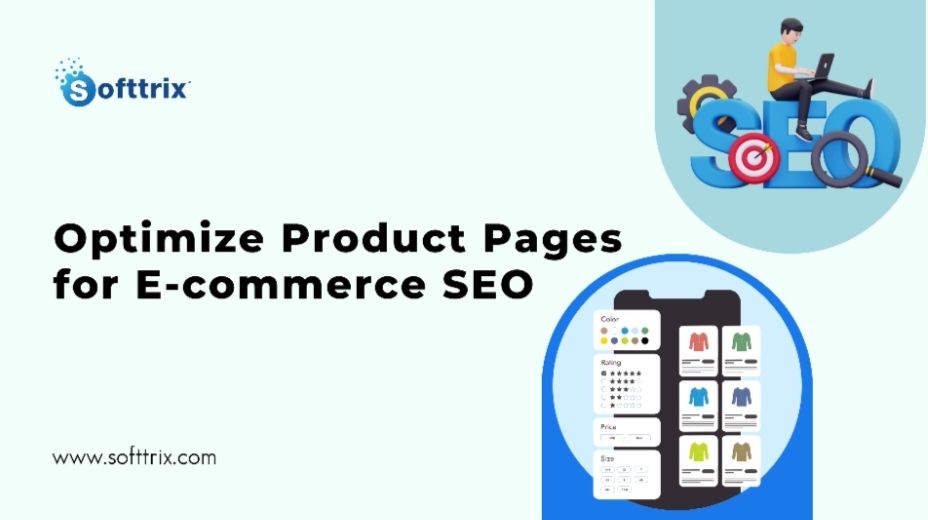The crucial role of SEO in e-commerce has also been underlined by the fact that product pages specific to your business need to be optimized to attract organic traffic. By following this guide, you can follow the steps and update your product pages with approved e-commerce SEO practices for 2024.
Comprehensive Keyword Research
Keyword research is one of the most vital procedures for the e-commerce SEO plan. Begin by using research terms that your potential customers type in search of products similar to yours. Google Keyword Planner, SEMrush, or Ahrefs can help you find keywords that people frequently search for but are not very competitive.
Optimize Product Titles
Use Long-tail Keywords—concrete titles that can define buyer intent, such as ‘best waterproof hiking boots for women,’ not just ‘hiking boots. ’ Using such keywords might contribute to your product page ranking higher.
They are an essential aspect of your e-commerce SEO services since they are part of search engines’ URLs when ranking pages. Create appropriate titles which are more specific, detailed, and specific and contain keywords.
- Primary keyword
- Brand name (if relevant)
- Product Type
- Key features or benefits
For instance, the most optimised title could be `Eco-Friendly Yoga Mat – Non-Slip, Durable, and Lightweight
Product Description and Product Copywriting Tips
Your product descriptions should be individual but contain elements of SEO. Do not repeat entire information on other product pages because search engines frown upon repetition of content. However, for SEO, write descriptions that contain proper keywords organically i.e., without forcing the keywords into the description.
Emphasize much on the positive results that the product will produce and come up with clear information that can help answer any question that the potential customer might be having. Emphasise the benefits and applications of services while keeping the language simple, entertaining, and informative.
For example, rather than stating that a car has audio controls, wheels, etc., the writer should tell how these tools alleviate a difficulty or improve a user’s experience. An example is: “This yoga mat’s non-slip surface makes your exercises safe, especially during and high-intensity sessions, whereas, its portability makes it convenient to carry from one class to another.”
Optimize Meta Titles and Descriptions
Meta titles and descriptions are essential to any e-commerce SEO strategy.
Meta tags should be brief and contain the primary keyword along with a call to action. Ideally, you should limit the string to between 50 and 60 characters in length. For instance, “Eco-Friendly Yoga Mat – Durable non-Slip.”
Secondary keywords should be included in meta descriptions, along with the call-to-action; meta descriptions must be within 160 characters to remain visible within the SERP; example of a meta description: Shop our yoga mat made from sustainable materials with a non-slip surface and super lightweight.
Use High-Quality Images and Alt Text
Visuals are one of the key components of the e-commerce product pages. Make sure all selected images are in high quality and, if required, provide several types of images – for instance, an image from above and an image close-up. Label files clearly to indicate what is inside them, and also include alt text for each image.
The use of alt text benefits the websites, and it is easier for the search engines to identify what the images are depicting and it benefits the visually impaired people, as they cannot identify the content of the images. For instance, use descriptive alt text such as ‘Eco-friendly yoga mat in green with a non-slip surface’ instead of ‘image 1’.
Implement Structured Data Markup
Schema markup, or structured data markup, allows for the content on your product page to be indexed in a way that is easily understood by search engines. undefined org markup for products can enrich your listings with special tags like star ratings, price, and availability.
In particular, extending information from the product or adding product schema to your page can result in enhanced search results that provide additional information such as reviews and prices in SERPs.
Optimize Page Load Speed
In matters of user experience and SEO, the time taken to load a page is always a factor to consider. This may significantly affect bounce rates and the website’s ranking in the search results since slow-loading pages are a turnoff.
Minimize image sizes, make use of browser cache, and reduce the number of HTTP requests to enhance the loading time. You could use Google PageSpeed Insights or GTmetrix to analyze the problem and get suggestions about it.
Regularly Update and Monitor Performance
SEO is a continuous process. It is useful to update your product pages with new information, images, or improvements as frequently as is needed. Check your page ranking with such resources as Google Analytics and Google Search Console to see the amount of traffic and other parameters.
However, e-commerce businesses must shift their SEO strategies based on elements like performance metrics, and emerging trends among competitors. It is suggested to hire an eCommerce SEO agency or eCommerce SEO specialist to make sure that all the optimizations are path and are conducted by the modern trends and standards.
The Conclusion
Generally, e-commerce SEO providers of product pages should include keyword research, on-page optimization, technical changes, and UX changes. Following this pattern will help you achieve more effective positioning of your product pages, a reasonable flow of traffic, and increased sales rates.
Whether an e-commerce business has an in-house SEO department or collaborates with an e-commerce SEO company, building a strong SEO foundation is essential to succeeding in the e-commerce market. Discover the various packages available in eCommerce SEO to determine the best choice by a company’s goals and vision.
